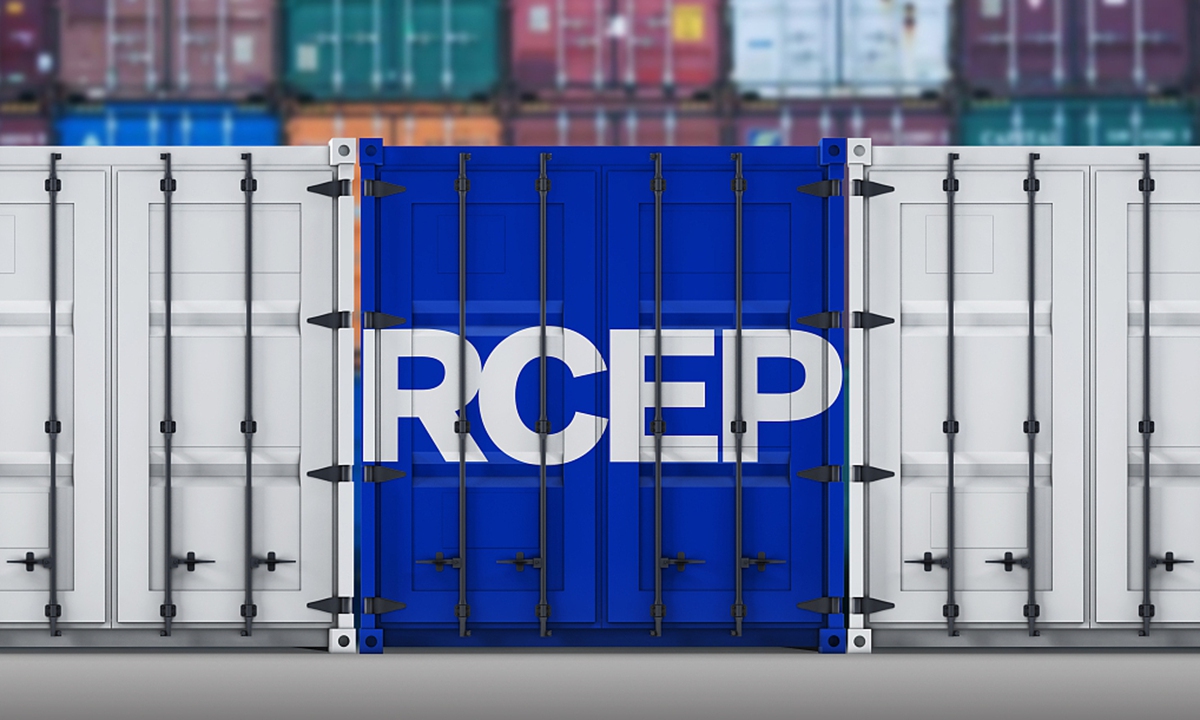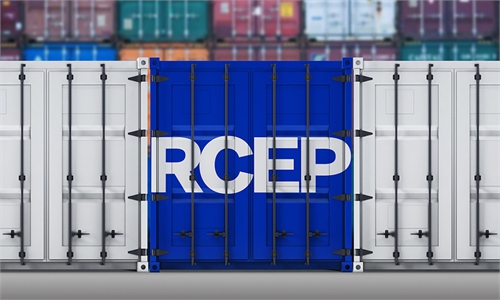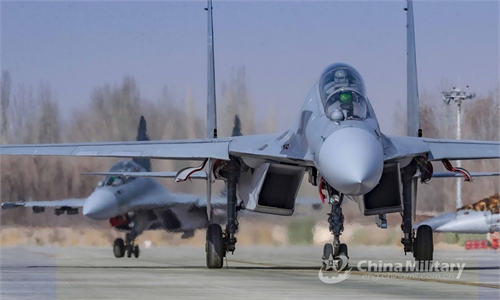
RCEP Photo:VCG
The Regional Comprehensive Economic Partnership (RCEP) entered into force in the Philippines on Friday, signifying that the pact is now effective for all 15 members, a new stage of full implementation for the free trade area with the largest population, largest economic and trade volume in the world.
Experts said the open and inclusive pact will inject renewed momentum into regional economic integration, and contribute to the long-term regional and global economic stability and development. In contrast, the US-led discriminatory and exclusive Indo-Pacific Economic Framework for Prosperity (IPEF), which is based on the principle of "America first," serves as a political tool for the US to encircle China.
"The full entry into force of RCEP fully demonstrates that the 15 member countries have taken practical actions to support an open, free, fair, inclusive and rules-based multilateral trading system, and they are committed to continuously promoting a comprehensive, mutually beneficial and high-level economic partnership," a spokesperson from the Ministry of Commerce (MOFCOM) said on Friday.
The 15 countries' commitment to open goods, services and investment markets, along with the high-level rules in various sectors, will greatly promote the free flow of production elements in the region, including raw materials, products, technology, talent, capital, information and data, the spokesperson said, noting that a more prosperous and integrated regional market will be gradually formed for in-depth cooperation among member countries at a larger scale and higher level.
Signed on November 15, 2020, the 15-member RCEP is the world's largest free trade agreement covering about 30 percent of the world's population, and also accounting for 30 percent of global trade. The agreement entered into force on January 1, 2022 for China and nine other countries, with the Philippines the last country to ratify the free trade agreement (FTA) deal.
"The RCEP entering into force for the Philippines underscores that the fruitful results linked to regional economic integration under the RCEP over the past year have been recognized by the Southeast Asian country," Da Zhigang, director of the Institute of Northeast Asian Studies at the Heilongjiang Provincial Academy of Social Sciences, told the Global Times on Friday.
The RCEP has delivered substantial benefits and dividends to member countries through lowering trade costs, facilitating the integration of supply chains, and benefiting economies in the region, Da said, noting that the pact has helped the recovery of the Asia-Pacific economy, offsetting strong headwinds caused by sluggish global demand, the Russia-Ukraine conflict and aggressive US interest rate hikes, according to Da.
Data from the MOFCOM showed that the foreign trade volume between China and other RCEP members hit 12.95 trillion yuan ($1.83 trillion) in 2022, a year-on-year increase of 7.5 percent, accounting for 30.8 percent of China's total foreign trade. Last year, China's actual use of foreign capital from other RCEP members was $23.53 billion, up 23.1 percent year-on-year.
As the world's largest FTA takes effect for all members, the US is further stepping up containment of China to expand its presence in the Asia-Pacific region through the discriminatory and exclusive Indo-Pacific Economic Framework for Prosperity (IPEF).
However, experts said the US-led IPEF is a unilateral arrangement that the US dominates to serve an "America First" agenda, and the US' purpose of containing China with the framework will be doomed.
Unilateral IPEF
A ministerial meeting for the IPEF that concluded in Detroit, Michigan on May 27 agreed to a deal to strengthen supply chain cooperation for critical materials and products in order to reduce reliance on China.
US Commerce Secretary Gina Raimondo told a news conference after the meeting that the US "firmly opposes" China's actions against Micron, Reuters reported.
"It's the US that has committed economic coercion instead of China, and the IPEF itself is one such example," Li Yong, deputy chairman of the Expert Committee of the China Association of International Trade, told the Global Times on Friday. Unlike win-win cooperation and the market rules-based RCEP, the IPEF is a unilateral arrangement that the US dominates to contain China, and the negotiations for the IPEF talks are opaque and unfair as the US pressures other economies to accept its conditions with financial hegemony, monopoly and other threats, Li said.
He criticized the US for politically distorting global industrial and supply chains by damaging the foundation of win-win cooperation, and said the US move as a result exerted a negative impact on the global economic recovery in a volatile international environment.
Foreign Ministry Spokesperson Mao Ning described the supply chain pact as "discriminatory," "exclusive" and "protectionist," which ruins the open and inclusive foundation on which the Asia-Pacific region has achieved its economic success.
"The US, in an attempt to hold back China's development and perpetuate its hegemony, has politicized and instrumentalized trade and tech issues, and coerced or co-opted some countries into adopting export restrictions against China," she stressed at a press conference last week.
Launched in May 2022, the US-dominated IPEF mainly includes countries neighboring China, such as some members of ASEAN, China's largest trading partner and it plans to produce agreements in four areas including trade, supply chains, the green economy and the so-called "fair" economy.
"The US' IPEF aims to make the ASEAN a breakthrough in containing China, but it will eventually go against the grain," Xu Liping, director of the Center for Southeast Asian Studies at the Chinese Academy of Social Sciences, told the Global Times on Friday.
Along with the implementation of the RCEP, cooperation potential between China and ASEAN will be further released, sparking more demand. In contrast, the exclusive IPEF goes against regional integration in the Asia-pacific and the trend toward globalization, and cannot deliver long-term dividends to the region and thus it's hard to be promoted, Xu said.
"We need to keep strategic focus and properly deal with challenges created by the IPEF with high-level institutional opening-up and high-quality development," Xu said.
Opening-up commitment
Despite the US' continuous push for "decoupling" and unilateralism and protectionism, China is unswervingly promoting high-level opening-up and is speeding up the establishment of a high-standard free trade network globally in light of the RCEP.
"The RCEP offers great development potential, especially within the digital economy, cross-border trade and green economy," Da said, noting that RCEP is an open system and more economies are welcome to join the pact to make greater contribution to the stability of the global economy.
In the future, India may return to the pact, while other countries in the South Pacific region and South Asia are also expected to join the RCEP, Da said.
Currently, China is actively advancing its accession to the Digital Economy Partnership Agreement (DEPA) and the Comprehensive and Progressive Agreement for Trans-Pacific Partnership (CPTPP). In addition, the first-round consultation of Version 3.0 China-ASEAN FTA negotiations were held in February this year. The Early Harvest Arrangement for an FTA between China and Nicaragua took effect on May 1, Li said.
It's expected that China will reach high-level FTAs with more trade partners in the future and further increase the proportion of zero-tariff products in goods trade to benefit the global trade, according to Wei Jianguo, vice chairman of the China Center for International Economic Exchanges and former vice minister of the Ministry of Commerce.


